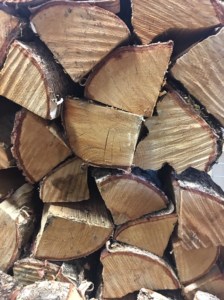 Within a few weeks people will start to (or at least contemplate) using their wood burning stove once again, after probably many months of none-use. Wood, which has been been seasoning over the long, dry, hot summer maybe ready to burn.
Within a few weeks people will start to (or at least contemplate) using their wood burning stove once again, after probably many months of none-use. Wood, which has been been seasoning over the long, dry, hot summer maybe ready to burn.
How Much Firewood Do I Need?
This is subject to many factors, such as the size of your room, how efficient your stove is (An Ecodesign stove will use much less wood than an older, less efficient stove), the insulation in a home, type of wood you have, and how often you will use the stove. If you are going to use your stove on most evenings and at weekends from October to April, then 3 to 4 cubic meters per year is typical for most UK households, but if you plan to use the stove much more often a figure of around 6 cubic meters will be more accurate. A 0.8m crate of seasoned firewood currently costs from around £125.
How Should I Store Firewood?
Cut the wood up into shorter lengths, around 15 to 40 cm. Ensuring they are splitted to increase surface area will speed up drying. Having a selection of sizes is ideal, as you can then vary how much you add to a fire, depending on required heat, and desired duration of the fire (i.e will you be using it all evening, or just to take the edge off a cool room?).
What About Space?
Will you be seasoning your own wood? If so you will need a good amount of space. Many people who season their own wood typically have 6 to 8 cubic meters of space, where the wood is seasoned over 2+ years. If you buy your own wood all ready seasoned, then you may perhaps only need 1 to 2 cubic meters, as when that wood runs down, you can simply order some more.
Where Should I Store?
You should store wood in dry areas, which is well ventilated, but away from the elements – especially rain which will eventually rot the wood. You should always stack your firewood as opposed to throwing it in a disorganised pile. Stacking will help promote air to circulate. You should never stack firewood against a wall when outdoors, as this can leave the wood open to moisture and bacteria, which as mentioned previously can rot the wood, and prevent it from seasoning correctly. Always make sure you leave a few inches of space between your firewood and wall.
You should also check any local regulations regarding firewood storage. You must avoid storing firewood on a soil floor if outside, as the soil will rot the wood. If the wood needs to be kept outside, apart from using a top cover like a tarpaulin, stack them on a base, 2 by 4 sized planks of wood work well, so do wooden pallets. If you do use a tarpaulin make sure you don’t cover the wood completely, as this will prevent air from circulating. You should ideally place the tarpaulin over the top and a little down the sides, for maximum benefit.
.
Bringing Wood Indoors
You should have at least 3 to 5 days supply of wood in the home. This has a number of reasons that include:
1. It saves you having to keep going out in the cold to get more wood
2. Wood at room temperature is just generally nicer to hold and take to the waiting stove
3. Any surface moisture, ice or damp on the wood will have disappeared
4. There is something really nice about seeing a small collection of logs near a stove!








